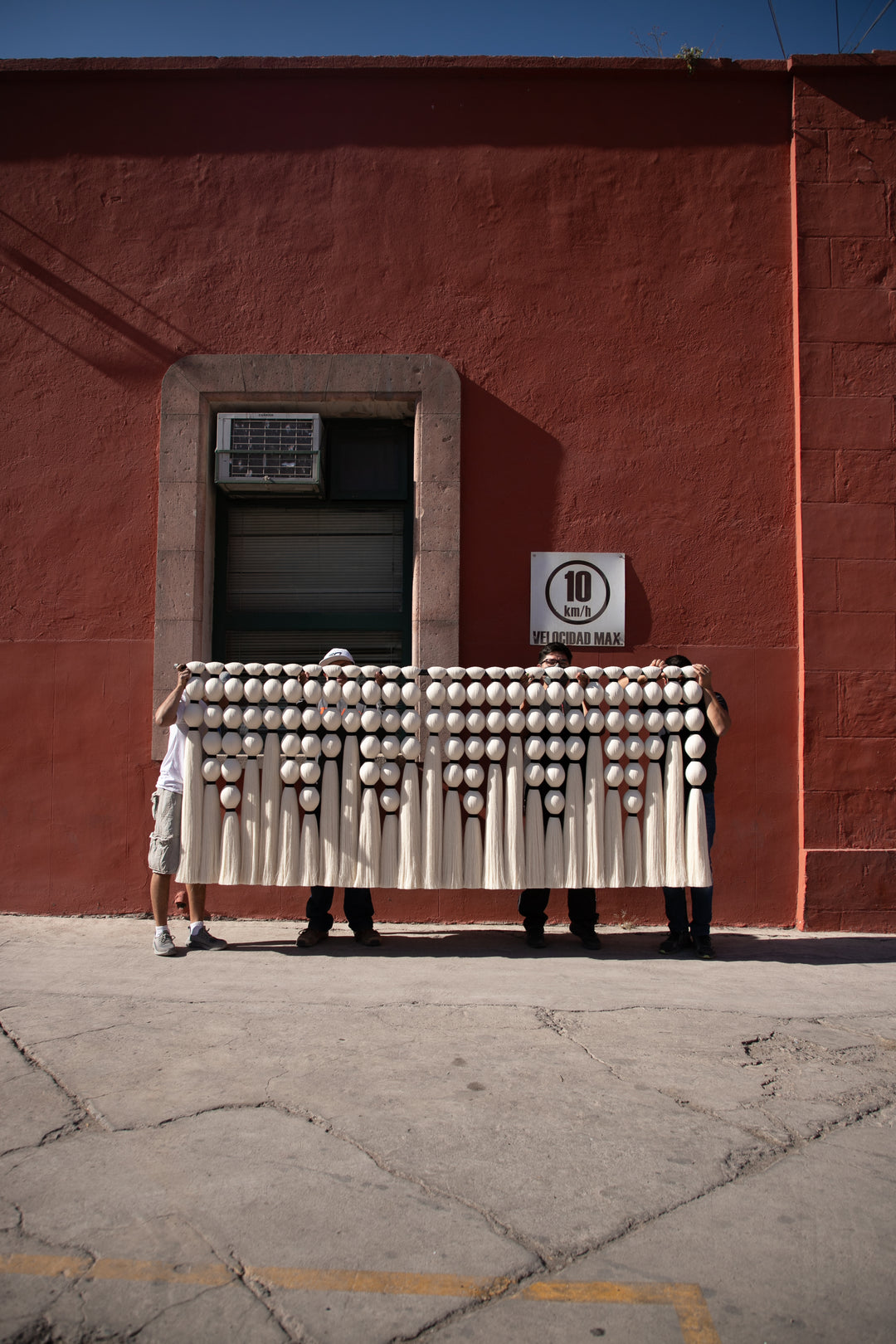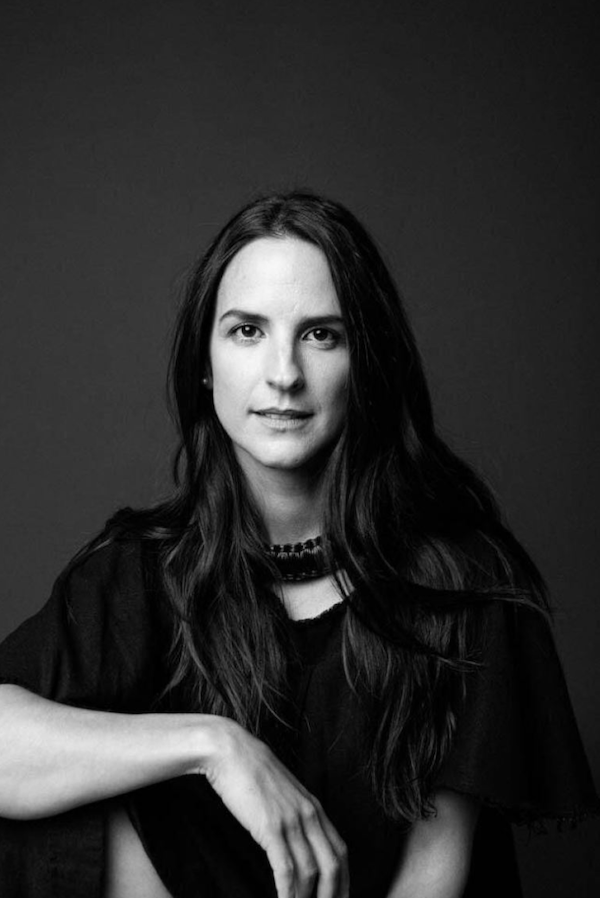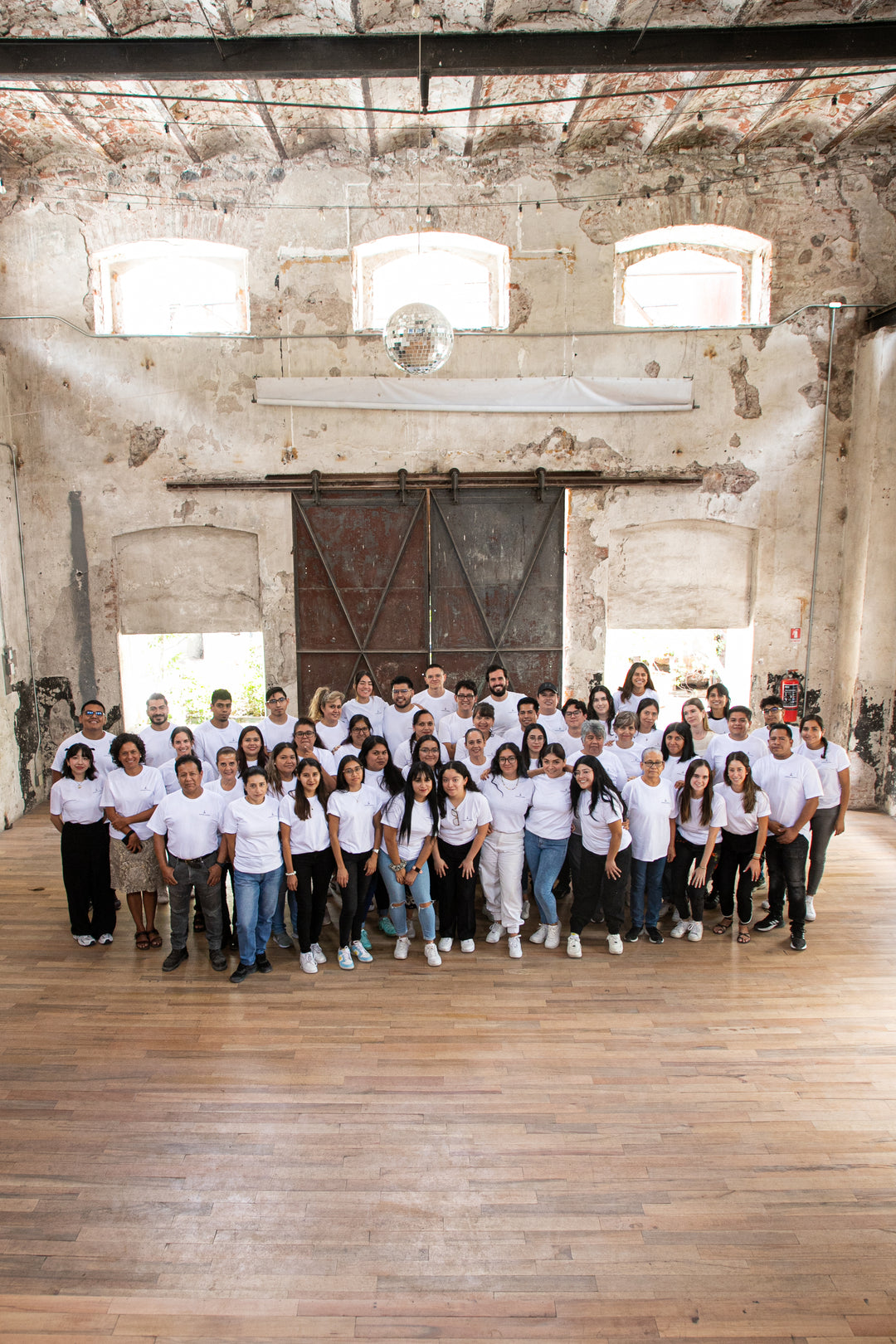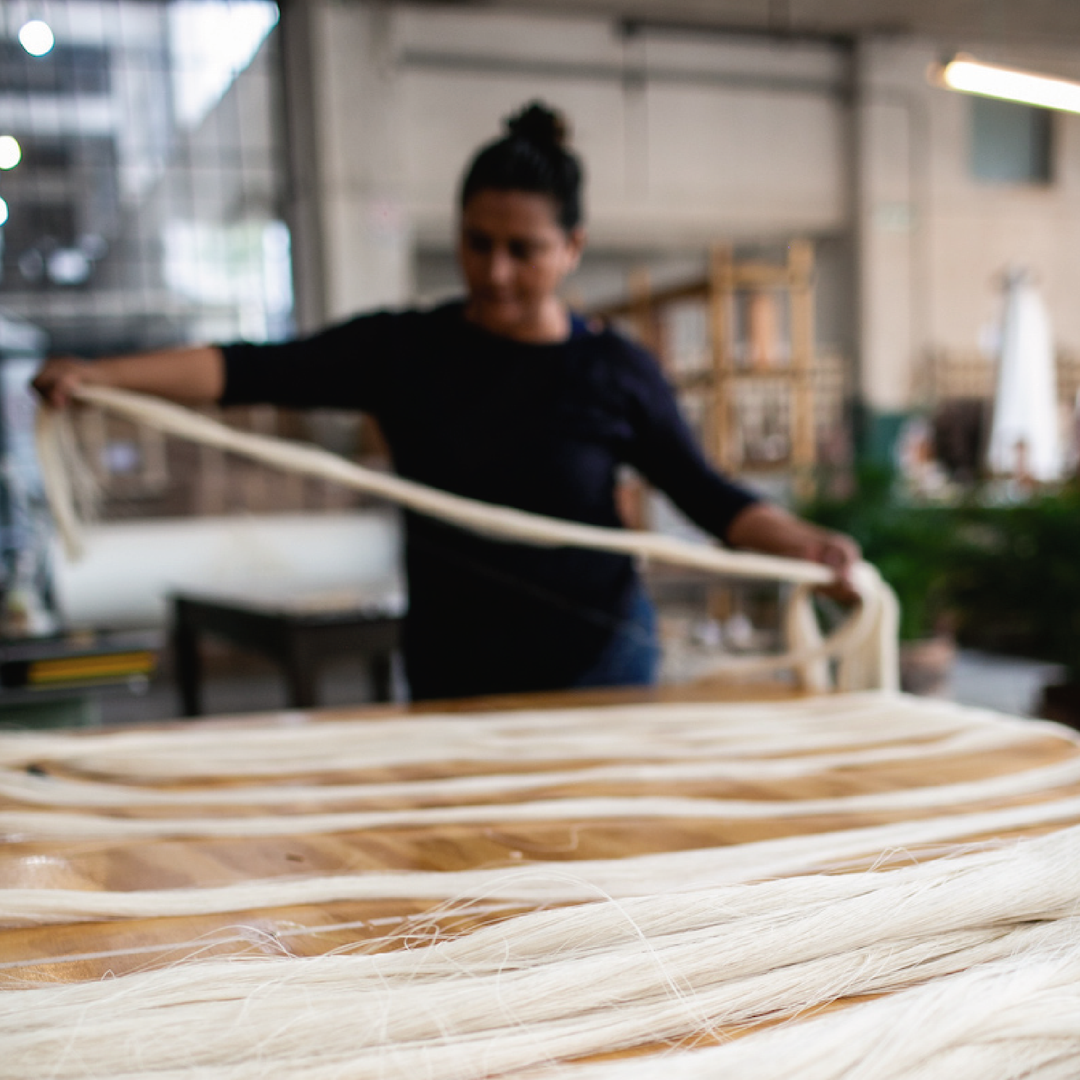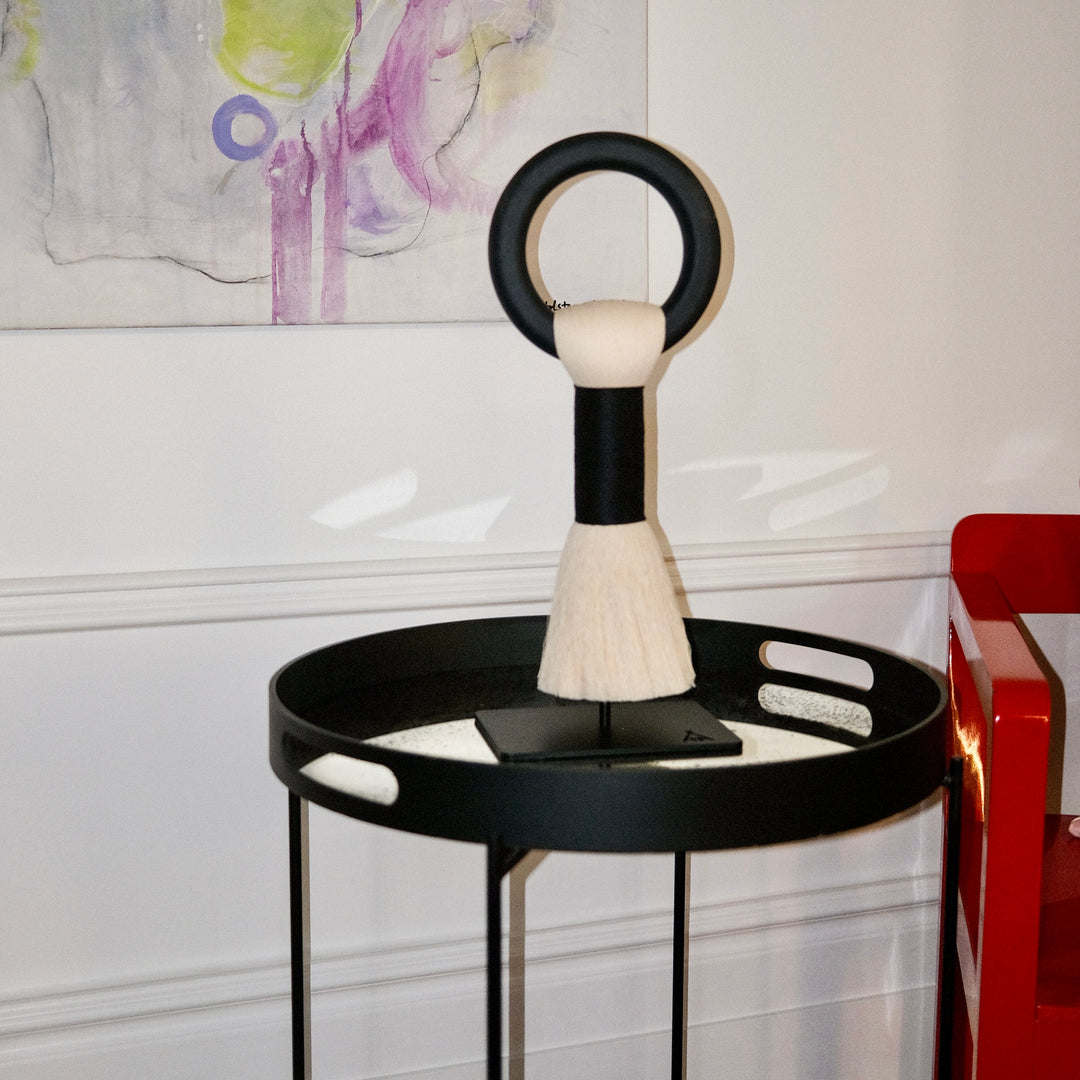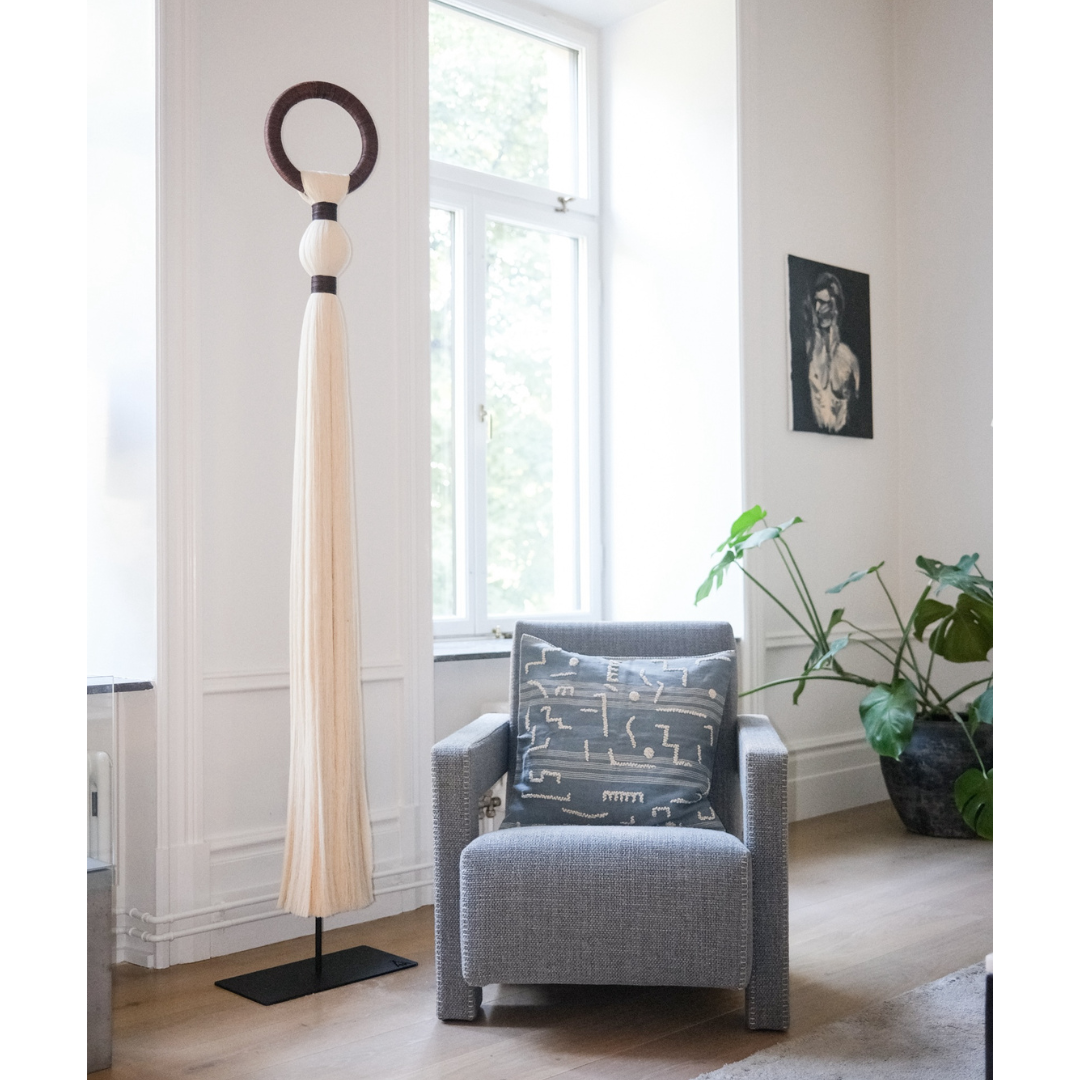Story & Highlights
FOUNDER: Ana Holschneider
TEAM: 60 full-time employees
LOCATION: Querétaro, México
MATERIALS: Raw and waxed cotton threads.
Caralarga's primary resources include raw cotton thread and textile waste discarded due to weaving errors. In 2014, they saw the potential in these materials to rethink and explore waste as a means to create unique, timeless, and sustainable jewelry and clothing pieces. Their creative evolution has also led them to discover and collaborate with artisans working with other natural materials, such as fiber from the sansevieria plant and recycled bull horn. These artisans preserve knowledge about ancestral techniques and emphasize care and respect for nature.
The Caralarga Large and Medium Format pieces are the outcome of the natural development of their initial work in textile jewelry. Venturing into creating larger pieces, they discovered a new perspective on cotton and handwoven fabric, resulting in interior decoration pieces designed to transform spaces through timeless designs and showcase the virtues of raw materials.
